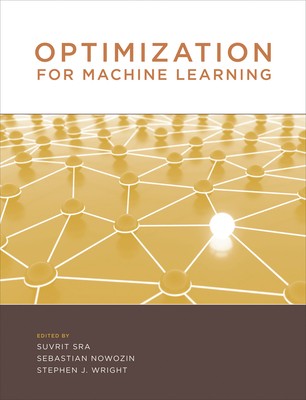
- We will send in 10–14 business days.
- Publisher: MIT Press
- ISBN-10: 0262537761
- ISBN-13: 9780262537766
- Format: 20.1 x 25.2 x 2.5 cm, softcover
- Language: English
- SAVE -10% with code: EXTRA
Optimization for Machine Learning (e-book) (used book) | bookbook.eu
Reviews
Description
An up-to-date account of the interplay between optimization and machine learning, accessible to students and researchers in both communities.The interplay between optimization and machine learning is one of the most important developments in modern computational science. Optimization formulations and methods are proving to be vital in designing algorithms to extract essential knowledge from huge volumes of data. Machine learning, however, is not simply a consumer of optimization technology but a rapidly evolving field that is itself generating new optimization ideas. This book captures the state of the art of the interaction between optimization and machine learning in a way that is accessible to researchers in both fields.
Optimization approaches have enjoyed prominence in machine learning because of their wide applicability and attractive theoretical properties. The increasing complexity, size, and variety of today's machine learning models call for the reassessment of existing assumptions. This book starts the process of reassessment. It describes the resurgence in novel contexts of established frameworks such as first-order methods, stochastic approximations, convex relaxations, interior-point methods, and proximal methods. It also devotes attention to newer themes such as regularized optimization, robust optimization, gradient and subgradient methods, splitting techniques, and second-order methods. Many of these techniques draw inspiration from other fields, including operations research, theoretical computer science, and subfields of optimization. The book will enrich the ongoing cross-fertilization between the machine learning community and these other fields, and within the broader optimization community.
EXTRA 10 % discount with code: EXTRA
The promotion ends in 12d.03:49:51
The discount code is valid when purchasing from 10 €. Discounts do not stack.
- Publisher: MIT Press
- ISBN-10: 0262537761
- ISBN-13: 9780262537766
- Format: 20.1 x 25.2 x 2.5 cm, softcover
- Language: English English
The interplay between optimization and machine learning is one of the most important developments in modern computational science. Optimization formulations and methods are proving to be vital in designing algorithms to extract essential knowledge from huge volumes of data. Machine learning, however, is not simply a consumer of optimization technology but a rapidly evolving field that is itself generating new optimization ideas. This book captures the state of the art of the interaction between optimization and machine learning in a way that is accessible to researchers in both fields.
Optimization approaches have enjoyed prominence in machine learning because of their wide applicability and attractive theoretical properties. The increasing complexity, size, and variety of today's machine learning models call for the reassessment of existing assumptions. This book starts the process of reassessment. It describes the resurgence in novel contexts of established frameworks such as first-order methods, stochastic approximations, convex relaxations, interior-point methods, and proximal methods. It also devotes attention to newer themes such as regularized optimization, robust optimization, gradient and subgradient methods, splitting techniques, and second-order methods. Many of these techniques draw inspiration from other fields, including operations research, theoretical computer science, and subfields of optimization. The book will enrich the ongoing cross-fertilization between the machine learning community and these other fields, and within the broader optimization community.


Reviews